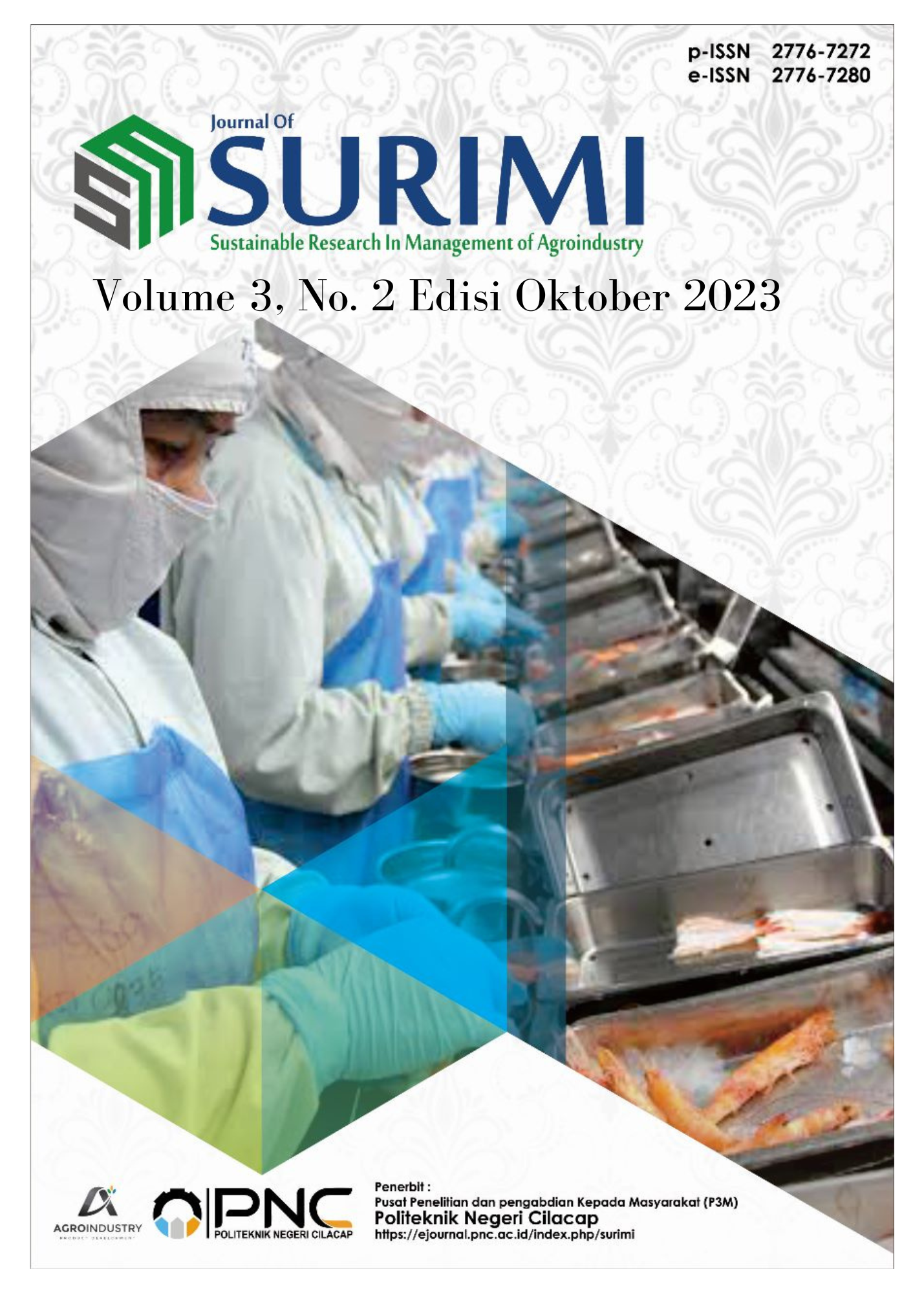Penggunaan Macam Pupuk Organik Cair Terhadap Bibit Kelapa Sawit (Elaeis guineensis Jacq.) pada Media Tanam yang Berbeda
[The Use of Various Liquid Organic Fertilizer Types on Palm Oil Seeds (Elaeis guineensis Jacq.) with Different Planting Media]
 Abstract views: 110
,
Abstract views: 110
,
 PDF downloads: 169
PDF downloads: 169
Abstract
ABSTRACT
Palm oil nurseries are the starting point that really determines the process and result of palm oil’s growth in the field. The fertilization process and using the right planting media can have a positive influence for the seedling growth process. This research aims to determine the effects of providing various types of LOF and planting media on the growth of palm oil’s seedling in pre-nursery step. This research was carried out at KP2 Institut Pertanian STIPER Yogyakarta which located in Wedomartani, Ngemplak, Sleman, Daerah Istimewa Yogyakarta from March until June 2023. This study used a completely randomized design (CRD) method. The first factor was the different types of LOF which consisted of babana peels, coconut water and fruit waste. The second factor was the planting media that consisted of soil, soil : compost, and soil : rice husk with each planting media having the same ratio of 1 :1. The data result of this research were analyzed using ANOVA at 5% of real level, if there was a significant difference with the result then used the DMRT test with the range was 5% too. The results of this research showed that the application of various LOF types and planting media had the same effect for the plam oil seedling growth in pre-nursery steps. There was no real interaction between the provision of different LOF types and planting media on the palm oil seedling growth in pre-nursery steps. The use soil:compost has a positive effect on the growth of seedlings compared to the others.
Keywords : palm oil, liquid organic fertilizer, planting media
ABSTRAK
Pembibitan kelapa sawit merupakan titik awal yang sangat menentukan proses serta hasil pertumbuhan kelapa sawit dilapangan. Proses pemupukan dan penggunaan media tanam yang tepat dapat memberikan pengaruh yang positif terhadap proses pertumbuhan bibit. Penelitian ini bertujuan untuk mengetahui pengaruh pemberian macam POC dan media tanam terhadap pertumbuhan bibit kelapa sawit di pre nursery. Penelitian ini telah dilaksanakan di KP2 Institut Pertanian STIPER Yogyakarta yang terletak di Wedomartani, Kecamatan Ngemplak, Kabupaten Sleman, Daerah Istimewa Yogyakarta pada bulan Maret 2023 – Juni 2023. Penelitian ini menggunakan metode rancangan acak lengkap (RAL) faktor pertama adalah macam POC yang terdiri atas POC kulit pisang, POC air kelapa, dan POC limbah buah – buahan. Faktor kedua adalah media tanam yang terdiri atas tanah, tanah : kompos, tanah : sekam padi dengan tiap media tanam memiliki perbandingan 1 : 1. Data hasil penelitian dianalisis menggunakan sidik ragam (ANOVA) pada jenjang nyata 5%, jika terdapat perbedaan nyata dilakukan uji DMRT dengan jenjang 5%. Hasil dari penelitian menunjukkan bahwa pemberian macam POC dan media tanam memberikan pengaruh yang sama baik terhadap pertumbuhan bibit kelapa sawit di pre nursery. Tidak terdapat interaksi nyata antara pemberian macam POC dan media tanam yang berbeda terhadap pertumbuhan bibit kelapa sawit di pre nursery. Pemakaian tanah : kompos memberikan pengaruh positif dibandingkan dengan yang lainnya.
Kata kunci : kelapa sawit, pupuk organik cair, media tanam
Copyright (c) 2023 Journal of Sustainable Research In Management of Agroindustry (SURIMI)

This work is licensed under a Creative Commons Attribution 4.0 International License.
Authors who publish with this journal agree to the following terms:
- Authors retain copyright and grant the journal right of first publication with the work simultaneously licensed under a Creative Commons Attribution License that allows others to share the work with an acknowledgement of the work's authorship and initial publication in this journal.
- Authors are able to enter into separate, additional contractual arrangements for the non-exclusive distribution of the journal's published version of the work (e.g., post it to an institutional repository or publish it in a book), with an acknowledgement of its initial publication in this journal.
- Authors are permitted and encouraged to post their work online (e.g., in institutional repositories or on their website) prior to and during the submission process, as it can lead to productive exchanges, as well as earlier and greater citation of published work (See The Effect of Open Access).










